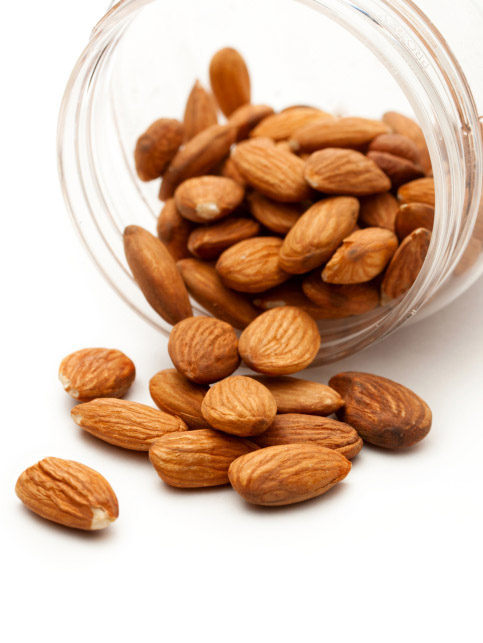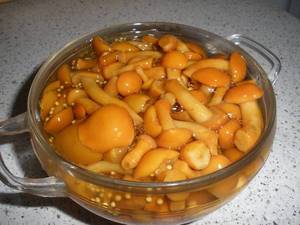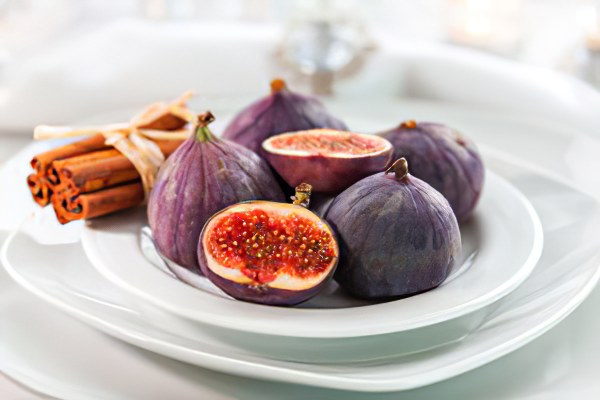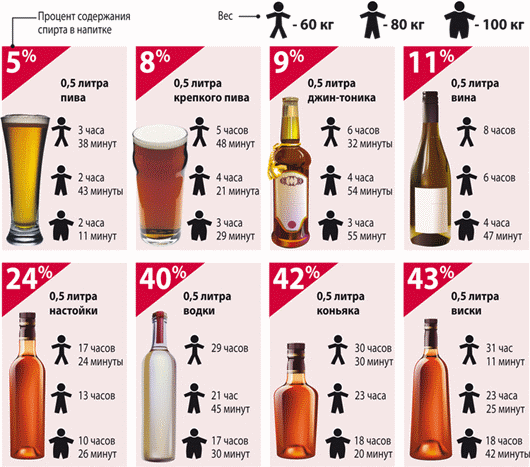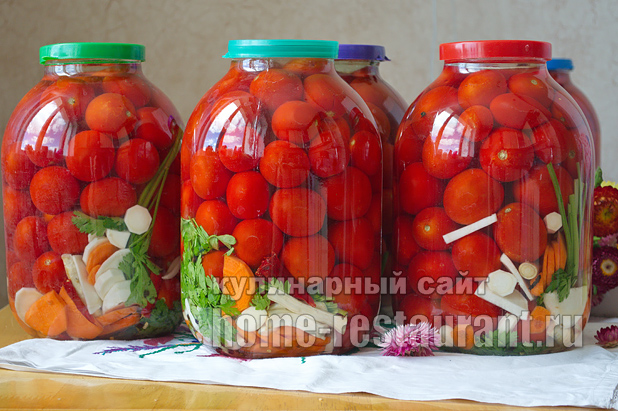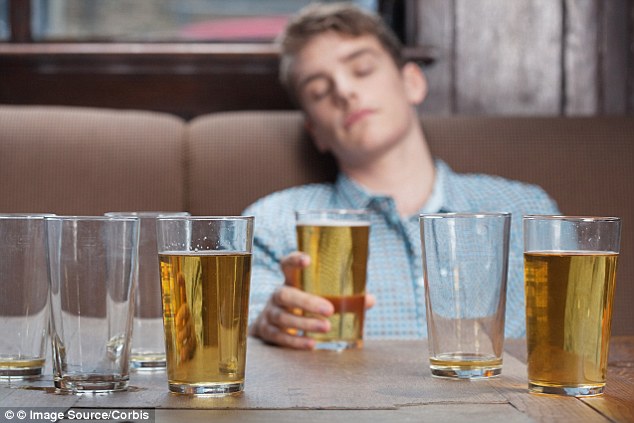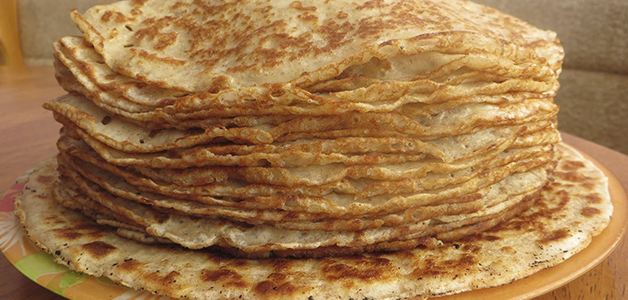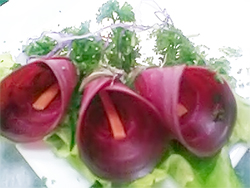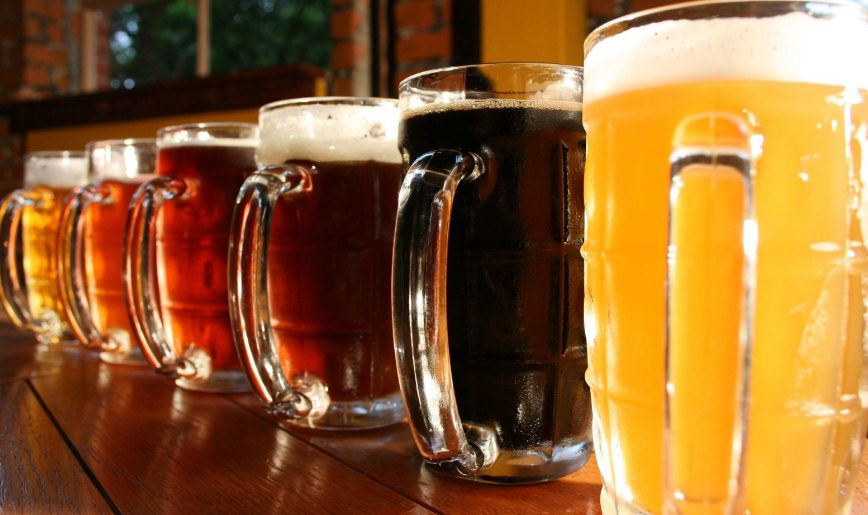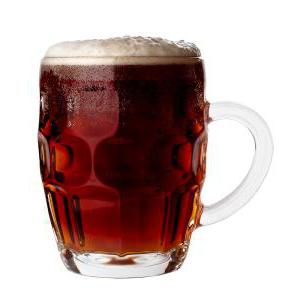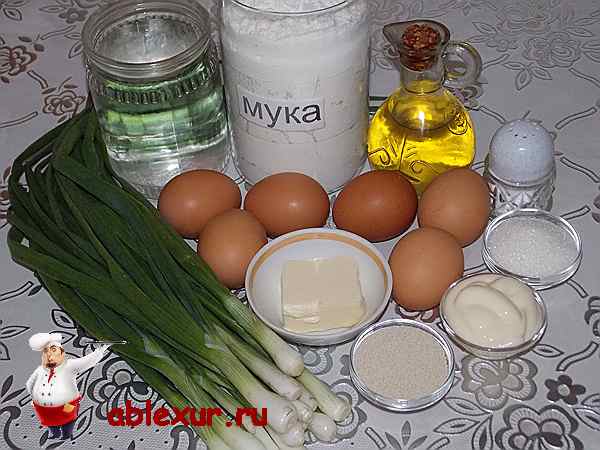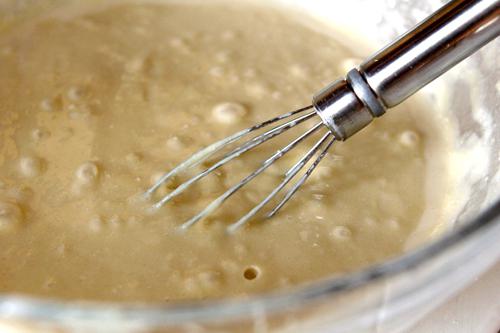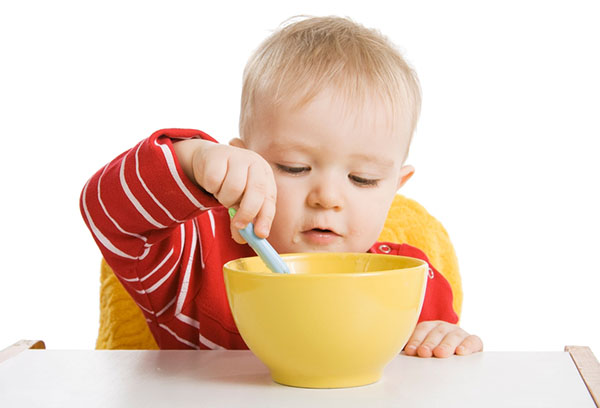What is ale: how and with what to drink.
The fact that ale is a beer that the British love, most compatriots know from films and books.
In Britain, they say that their country can be recognized only by stepping over the threshold of the pub where they continue to brew ale and consider its bitter-sweet taste and fruity aroma to be a gift from God.
The taste of ale differs from the usual beer, but nevertheless it certainly belongs to the family of foam drinks based on barley malt. The taste of classic ale is special - you can hear shades of herbs, spices and fruits in it, and the absence of hops and quick cooking make it sweetish.
The finished product is not filtered or pasteurized. The technology features provide this variety with unique qualities - having tasted an ale once, you will never mistake it with a lager or beater.
Ale story
In the XII century, a drink with this name was already in England. Recipes and composition were not preserved, but it is known that hops were brought to the island of Great Britain much later.
Everything that was prepared by the brewers was called ale, and so that the drink wandered and did not spoil too quickly, herbs and spices were added to the wort - gruyte, consisting of wormwood, ginger, nutmeg, heather, etc. In the Middle Ages, bread and ale were the main ones products - the minimum set, without which the British could not imagine life.
Hops were brought to England from Holland only at the end of the 17th century, and the brewers began to add it to the wort. To designate a new drink with hops, they began to call it beer, but they continued to cook ale according to the old recipe. A hundred years later, ale was recognized as a kind of beer, now it is included in the generic concept along with porter, beater and lager.
Now ale is produced in many countries, for example, in the USA, Belgium, Ireland. Now recipes are often used, which violates the classic recipe, but brings the drink closer to modern tastes.

How is ale different from beer?
Ale cannot be different from beer - he is beer himself, or rather, one of its varieties. Like all varieties, English ale is produced by fermentation of wort. The recipes use malt from barley or wheat, sometimes they use rye and unmalted grain, hops, as a rule, are not used.
We are used to a bright foamy camp, which we consider to be a true beer, so it makes sense to sort out the differences.
Type of fermentation
Ale is prepared with top fermentation, this is an ancient method used by Sumerians. On our continent, in the era of the emergence of ale, “light” fungi grew, which, when fermented, float to the surface and form a yeast cap.
"Heavy" fungi arrived in Europe after the discovery of America, they settle on the bottom of the fermentation tank. It is such yeast that is used in the lager recipe.
Temperature
Light yeast loves heat, so the optimum fermentation temperature is 15-24 ° C. For other types of beer, material that is more comfortable in cooling to 14 ° C is used. In the cold, unwanted microorganisms lose their activity, the wort does not turn sour and can slowly wander for a long time.
But in the heat ether compounds stand out, giving the ale a bright and deep taste. The temperature factor plays a role in the fermentation period - ale matures faster than lager, in some breweries it only takes 2 weeks.
Filtration and pasteurization
Real English ale is not filtered or pasteurized; it wanders to the last drop. Live beer is stored for several days, but its taste is very rich.
The lager can travel long distances, this largely explains its popularity.
Fortress
The real ale is easy to recognize after the first sip - it is almost always weaker than the lager and it has less carbon dioxide. Ale is not intended for intoxication; it is drunk for pleasure and quenching thirst.
Taste
Ale - beer is tasty, weak and perishable. Its characteristic feature is a sweetish taste and a light fruity-plant aroma without a pronounced smell of alcohol.
Each brewery has its own set of components, in British pubs you can find a soft drink reminiscent of kvass, bitter weak and very dark, light strong with a nutty flavor and many more varieties.

Types of Ale
The criteria for the classification of British and Irish ales are considered taste, color, aroma and sourdough additives. There are almost as many varieties as breweries - almost every pub in the UK offers 2-3 varieties of a drink.
Barley
Barley wine - Strong ale from 8.5 to 12% vol., known as barley wine. Brewed from a dense wort that gives a bitter taste. This beer has a pronounced aroma of fruit and the color of dark honey. Thanks to the strength, the variety does not lose its qualities for a long time, and eventually becomes soft.
Wheat
Weizen weisse - light, smelling of freshly baked bread, flowers and fruits. An old recipe and a golden color distinguish the variety from a number of modern ales. Fortress - 5-6% vol.
Porter
This beer was once called Porter’s ale - that is, ale for port workers. The brand is known worldwide, the taste of beer with aromatic additives has made Porter one of the leaders in popularity. Porter can be dark or light - it depends on additives and types of malt. Beer of medium strength - from 4.5 to 7% vol.
Stout
Stout is often confused with a porter. The Irish stout came from a porter, but it is always dark due to burnt malt. The species has long been considered a medicine to restore strength, now the darkest of all ales is drunk for pleasure.
Varieties differ in strength, color saturation and taste, but coffee notes are always guessed in the stout.
White
Weisse or Berliner Weiss - very light (2.8% vol) sour German ale. In Germany, light beer with a light fruity note can be served with sweet syrup.

Bitter
Bitter the British rightly consider it a matter of national pride. In fact, this is not the most bitter variety. The bitterness is due to the use of hops and the lack of sugar in the recipe. It can be completely light or dark copper in color. Fortress - from 3 to 6.5% vol.
Lambic
Lambic - a reddish Belgian variety with cherries and raspberries. Prepared in old wine barrels from barley malt, ungrown wheat and hops. Yeast is not used in cooking. The strength varies depending on the aging time and the recipe.
Soft
Easiest Mild, close to kvass in strength - from 2.5 to 3.5% vol. Two types are produced - light and dark, both have a distinct malt flavor.
What is ale useful for?
 In beer that has not passed filtration and pasteurization, the beneficial substances of barley and brewer's yeast are preserved.
In beer that has not passed filtration and pasteurization, the beneficial substances of barley and brewer's yeast are preserved.
- Chemical elements P, Mg, Mn, Ca, Se, vitamins E and group B. This kit is useful for metabolism, maintaining healthy hair and skin.
- In live beer, there are many amino acids that activate protein metabolism, which, in turn, stimulates muscle growth during exercise.
- If the ale contains hops, during horse fermentation its substances have a beneficial effect on digestion, improve appetite and soothe with irritability.
- In moderate amounts, the drink has a relaxing effect, blood vessels expand and blood pressure decreases.
Attention! When starting a course of beer therapy, do not forget about a sense of proportion. 100 ml of ale contains about 40 kcal. This must be taken into account if you value the figure.
How to drink ale?
- Slowly pour beer over the wall of the tilted glass. Ale does not like high foam - a pleasant bitterness leaves her. In pubs, the process of filling the mug can take more than 5 minutes.
- Do not cool for a long time, the taste is revealed at + 7-12 ° C. The British usually warm a dark drink, but this is a matter of tradition.
- Dark varieties are good when you need to warm up, and light varieties are suitable for the summer beer season.
- Do not rush to empty the glass with a few sips, but do not stretch the process, otherwise the aroma will dry out. The British compare the pace of drinking with a slow gait - not in a hurry, but moving towards the goal.

What do we know about ale? Some believe that this name is a synonym for the word "beer." Others believe that ale is a type of barley foamy drink. And some are sure that it is about the Irish ale that Stevenson’s beautiful ballad (translated by Marshak) is composed. Remember: "But he was sweeter, drunker than honey than wine ..."? Stevenson describes how this ale was cooked by gnomes in mountain heather caves. And how was it really? Let's find out about the interesting history of ale - a traditional Irish and Scottish drink. Can I try it with us? And what kind of ale does he have in his homeland, and in other countries where the brewing culture is traditionally developed?
Drink history
Now everyone knows that beer is brewed from hops, barley (sometimes wheat or rice) malt and water. But it was not always like that. It is believed that the secret of beer was discovered by the ancient Sumerians five thousand years ago. But they cooked it without hops. The process of making the drink did not take as much time as it is now. Malt without hops ferments faster, but the drink is sweeter. To give the bitterness so beloved by many, to balance the taste, hops began to be added to beer. But on the British Isles, this plant was not known until the 15th century, until it was imported from Holland. The word “beer” was used in relation to the new drink brewed with the addition of hops, and the word “ale” to the traditional one. In addition to technology, it differs from the barley drink familiar to us also in taste. British, Scottish and Irish Ale were known. But now it is also brewed in Belgium and Germany. 
Technology
We will not go into unnecessary details here. We follow only the general scheme of production. Unlike lager - a bitter, calm beer, ales are not pasteurized. The sweetness of the malt (sprouted and fermented grain) in the ancient drink does not balance hops, but a mixture of spices and herbs called gruyt. It is boiled in a must. When cooking, yeast does not sink to the bottom, but floats on the surface. Irish ale is allowed to roam at room temperature 15-24 degrees C. The lager is set cool (5-10 degrees C), and the yeast in it sinks to the bottom of the vat. Therefore, ale is called top fermentation beer. But spilled in barrels, this drink does not cease to ripen. A little sugar is added to it to resume the fermentation process. Both taste and strength change depending on how long the drink plays. Then it is bottled to stop the process of accumulation of alcohols. 
Characteristics of the drink
At such a high temperature, the fermentation process is faster than that of the same lager, and much more rapidly. Without hop bitterness, with the addition of herbs, the drink is sweeter, with a rich fruity taste. It may be the scent of prunes, banana, pineapple, pear or apple. As a result of the fact that the drink is left to ripen in barrels, it really becomes "drunker than wine." How strong is Irish ale beer? How many degrees is it? This, as in wine, depends on the aging period. In the porter, so named because it was loved by the movers, 10% alcohol. And in barley wine (barley wine) - all 12. At the same time, there are weaker drinks: soft or light ale (2.5-3.5%). But what is characteristic of this type of beer is that it is sweeter and not bitter. And by consistency, it is thicker, richer than a traditional intoxicated drink. 
Varieties of Irish Ale
The drink became so popular among the people that it would be strange if its recipe remained the only and unchanged. Soon after the real, traditional honey drink, which, incidentally, is bottled without pressure from above, unlike ordinary beer, other varieties followed. Among them should be noted the dark Irish ale. This is the world-famous Guinness. Named after its founder, a Dublin-based entrepreneur, this stout has gained a coffee color thanks to the addition of refried barley grains and caramel malt. He is also called a particularly strong porter, although alcohol in it is about 7%. Kilkenny, the red Irish ale, is also very popular. It has a full-fledged taste and rich ruby \u200b\u200bcolor. It got its name from a small Irish town where the abbey of St. Francis is located. Local monks have been brewing this beer since the 18th century. The strength of the drink is about 4%, and an interesting color is achieved by adding a small amount of specially processed caramel malt.
Irish Ale in Continental Europe
In those countries where brewing traditions are rooted in the distant past, it is also customary to make ale. After all, the use of hops is a German innovation. In Belgium, the monks of the Trappist order since the early Middle Ages did well without him. However, over time, the brewers began to experiment, adding hops, barley and wheat malt, yeast and even juices to the drink. So such varieties of ale appeared as the Rhine Kölsch (light foamy drink). Altbier is also very popular in Germany (literally translated as “old beer”). It is boiled in Dusseldorf. Belgium is able to seduce beer even those who assure that this drink cannot be tolerated. One has only to try “Scream” and “Trappist Fathers”, “Double” and “Triple”, with the aroma of raspberries, banana, cherries ... 
Ale in Russia
In the Altai Territory, in the village of Bochkari, also recently began to produce Irish ale. The reviews of those who have tried the authentic product say that the Russian drink is similar to the original. The first sip gives a false sense of a bitter taste, but already from the second reveals the fullness of caramel sweetness. The aroma of creamy toffee, the color is copper-amber, the foam is not too plentiful. In the finale, there is no bitterness, but only a slight aftertaste of roasted grain. Reviews claim that this beer is easy to drink. It gives the general impression of a moderately fermented drink. Here it is - Russian, called "Irish Ale", beer. How many degrees is it? The alcohol content is quite tangible - 6.7 percent.
fb.ru
Ginger ale

Ginger Ale is a refreshing, delicate sweet drink with a delicate aroma of ginger. It is most often used in its pure form, but sometimes as an additional component to cocktails.
In addition to its palatability, ginger ale has many useful qualities. It is recommended to use for indigestion, it also soothes cough and sore throat. As mentioned above, ginger ale is popular in non-alcoholic cocktails. This helps those people who do not drink alcohol, but who do not want to fight off the company. So let's quickly consider with you a couple of recipes on how to cook ale.
Ginger Alcohol Free Ale Recipe
Ingredients:
- ginger root - 150 g;
- granulated sugar - 4 tbsp. spoons;
- lemon - 3 pcs.;
- sparkling water - 3 l;
- mint leaves to taste.
Cooking
How to cook ginger ale at home? We take fresh ginger, peel it, rub it on a coarse grater and, without draining the resulting juice, mix it well with sugar. Then add the finely grated zest of lemons, mix and crush the resulting mixture with something heavy for about 20 seconds. Next, pass the peeled lemons through a juicer and add all the juice to our mixture. Fill with sparkling water and let the drink brew for about 10 minutes. Then, carefully try and, if it turned out too sour, then add a little more sugar, and if sweet - then dilute with lemon juice. Filter the finished drink and pour into glasses. Top with mint sprigs. On summer days, you can add ice cubes to the drink.
Alcoholic Ginger Ale Recipe
Ingredients:
- sugar - 1 tbsp .;
- ginger root - 30 g;
- lemon juice - 0.5 tbsp .;
- dry yeast - ¼ teaspoon;
- boiled cold water - 2 l.
Cooking
How to make alcoholic ginger ale? So, we take a clean 2-liter plastic bottle and use a funnel to pour sugar and dry yeast into it. Then we take a fresh ginger root, peel and rub on a fine grater. You should get about 2 tbsp. tablespoons of ginger puree. Gently transfer the grated ginger into a faceted measuring glass and set aside.
We take a lemon, squeeze juice out of it and add it to a glass with ginger. Mix the contents of the glass thoroughly until a homogeneous mass is obtained. Then add a little pre-boiled, but chilled water and stir well. If you still want to cook non-alcoholic ale, then at this step we simply add honey or sugar, mix and pour into glasses, decorating with fresh mint. But to get alcoholic or fermented  ginger ale carefully pour the contents of the glass into a bottle with yeast and sugar. Close everything with a lid and shake well until sugar is completely dissolved. Then we pour water into the bottle without adding up to about 2 cm to the neck. Now we put our drink in a warm place and wait 2 days for the ale to ferment. You can check the degree of fermentation in the following way: we gently press the bottle with your finger and as soon as it becomes rigid and does not begin to squeeze, then the fermentation is over. Usually this process takes from 24 to 48 hours. After that, the alcoholic ginger ale is ready. Before use, the drink must be filtered through a strainer or gauze. Another nuance, before you open the bottle with ginger ale, you need to cool it in advance in the refrigerator, otherwise the drink will simply splash out.
ginger ale carefully pour the contents of the glass into a bottle with yeast and sugar. Close everything with a lid and shake well until sugar is completely dissolved. Then we pour water into the bottle without adding up to about 2 cm to the neck. Now we put our drink in a warm place and wait 2 days for the ale to ferment. You can check the degree of fermentation in the following way: we gently press the bottle with your finger and as soon as it becomes rigid and does not begin to squeeze, then the fermentation is over. Usually this process takes from 24 to 48 hours. After that, the alcoholic ginger ale is ready. Before use, the drink must be filtered through a strainer or gauze. Another nuance, before you open the bottle with ginger ale, you need to cool it in advance in the refrigerator, otherwise the drink will simply splash out.
Pour the alcoholic drink into glasses, decorate with mint, cinnamon or orange zest and serve.
womanadvice.ru
Ginger ale
We all know a huge number of beers. But there is one among them that stands separately - it is ginger ale (beer). This drink, in principle, can only remind us of real beer with color and foam. It is in the classic version non-alcoholic. But there are recipes that allow you to cook it like alcohol. All this can be done without much difficulty at home. Your beer will differ from its store counterparts, only with natural products. Ginger beer is a highly carbonated sweet drink of brown color with a bright aroma of ginger. As a rule, they drink it chilled in its pure form or add it to hard liquors (vodka, whiskey, gin). Ginger beer can taste like regular kvass, which can be a bit sweeter. In it, instead of the malt base, a mixture is used, which consists of ginger, lemon and cane sugar. Such a drink was invented by the surgeon and American pharmacist Thomas Cantrell. The first recipe for such a beer appeared in the 70s of the XIX century.
Non-alcoholic Ginger Beer Recipe
Ingredients:

Cooking:
Grate the ginger root and mix it with sugar. Add lemon juice and mix thoroughly. Our mixture is poured with cold mineral sparkling water. We insist 5 minutes. Then filter ginger beer through cheesecloth, add mint and a few slices of lemon. We serve to the table.
Alcoholic Ginger Beer Recipe
 Ingredients:
Ingredients:
- 25 g crushed ginger;
- 400 g of sugar;
- 150 ml of white wine;
- 4 l of water;
- 15 g of dry yeast.
Cooking:
We mix ginger with wine and sugar, pour hot water and let cool to 30 ° C. Add dry yeast. When fermentation is noticeable, after about 2-3 hours, pour ginger beer into a bottle and put it under a water lock (as an option, you can put a medical glove on the bottle and make a hole in one of your fingers). We filter our drink through cheesecloth after 2 days. We pour it into bottles, close tightly with lids and put in the refrigerator. After one day in the refrigerator, ginger ale is ready to eat. It foams like real beer thanks to carbon dioxide.
Jamaican Ginger Ale
 Ingredients:
Ingredients:
- 30 g of tartar;
- 100 g of ginger;
- 2 kg of cane sugar;
- 4 lemons;
- a pack of brewer's yeast.
Cooking:
Sliced \u200b\u200blemon with skins, grated ginger, sugar and tartar mix. Then we cook this mixture for half an hour on low heat for half an hour. Cool to room temperature and add yeast. The mixture roams for a day. Then pour it into another dish and leave until fully ripened.
A little about the features of ginger beer:
- The second name for ginger beer is ginger lemonade.
- It goes well with whiskey.
- Ginger non-alcoholic beer is often drunk by heroes from Harry Potter books.
- Used to treat headaches, coughs, and indigestion.
oimbire.com
Ginger ale: drink properties and recipes

Nowadays, there are numerous alcoholic and non-alcoholic drinks, among which ale is very popular. This is a type of beer that is produced by fast top fermentation at high temperature, and the history of this drink originates from the Middle Ages. The drink is presented in a variety of variations, including ginger ale. A number of questions arise: what is it like, what is its composition, what properties does it have, and how to cook ginger ale at home? To answer all these questions, you need to turn to history. Namely, the history of the creation of this drink. About it further.
The story of the appearance of ginger ale
Ginger Ale is a highly carbonated drink that has a sweet taste and a light aroma of ginger. It is customary to drink this drink both in pure form and as an additional component of alcoholic cocktails. Ginger ale can be prepared both as an alcoholic and as a tonic drink that does not contain alcohol.
Ginger beer appeared in the middle of the 18th century in the English county of Yorkshire. After some time, the popularity of ale spread throughout England. And in the XX century, at the very beginning, when the prohibition existed in the USA, ginger ale was a kind of folk outlet. Just at that time, ginger beer received the status of a fresh, tasty and tonic drink.
Composition and properties of ginger ale
The original recipe for the drink consists of products such as ginger root, granulated sugar, water, lemon juice and yeast. The mixture was left for several days for fermentation, after which excellent ginger beer was obtained. Depending on the formulation, the composition of the drink may also include honey, lemon or lime, fruits and tea tree petals. There are 2 types of ale: dark and light. Dark ale has a more saturated brown tint and a bright aroma than light.
Ginger ale is extremely effective for colds and other inflammatory processes, since its main ingredient - ginger - has very useful medicinal properties. The composition of this spice includes a large number of vitamins and minerals, such as magnesium, phosphorus, silicon, potassium, calcium, vitamin C and others. Ginger perfectly manifests itself as an anesthetic, has anti-inflammatory and soothing properties.
However, there are some contraindications to the use of ginger ale. It should not be taken by people suffering from low blood pressure, inflammatory skin diseases during the exacerbation period, with peptic ulcer and gallstone disease. It is also worthwhile to refrain from drinking this drink with bleeding of various localization, in the 2nd and 3rd trimester of pregnancy and during lactation.
Ginger Ale Recipes
To cook ginger ale at home, you do not need to resort to any scientific technology, just pick a recipe to taste and arm yourself with the necessary list of products. Let's consider in more detail how to make this drink.
The recipe for making non-alcoholic ginger ale includes:
- ginger root - 150 g;
- granulated sugar - 4 tbsp. spoons;
- lemon - 3 pieces;
- sparkling water - 3 l;
- mint leaves to taste.
Fresh ginger root must be peeled and grated, then combined with sugar. From the lemons you need to remove the zest, also finely grate and add to the mixture of ginger and sugar. Peeled lemons must be passed through a juicer. The resulting juice is added to ginger and pour the entire mixture obtained with sparkling water. Let the resulting ale be infused for 10 minutes, after which strain the drink, pour into glasses and garnish with mint leaves.
The recipe for a classic alcoholic ale includes:
- sugar - 1 cup;
- ginger root - 30 g;
- lemon juice - half a glass;
- dry yeast - half a teaspoon;
- chilled water - 2 l.
Pour dry ingredients into a clean glass jar, i.e. sugar and yeast, after which add ginger, peeled and grated on a medium grater. Lemon juice must be carefully mixed with ginger, granulated sugar and yeast until a homogeneous consistency is obtained. Close this mixture with a lid and wait for the sugar to dissolve.
Then it is necessary to add water to the jar with the ginger mixture, after which put the ale in a warm place for 2 days before starting the fermentation process. This recipe provides a fermentation time of 24 to 48 hours, after which ginger ale needs to be filtered and cooled before serving.

The recipe for non-alcoholic ale with ginger and honey consists of:
- 50 g of fresh ginger;
- 1 lemon
- 3 teaspoons of honey;
- 1 liter of mineral water.
In order to prepare a drink, it is necessary to remove the zest from the lemon and combine it with grated peeled ginger on a fine grater. Then add honey to the lemon-ginger mixture and mix until it is completely dissolved. Leave this mixture to infuse, and after 10 minutes add mineral water to it. Close the lid with cooked ale tightly and place in the refrigerator for at least 2 hours.
The recipe for ginger ale with raisins consists of:
- 4 l of cold water;
- 200 g of ginger root;
- 3 lemons;
- 0.5 kg of sugar;
- 100 g of raisins.
This recipe involves painstaking and rather long work, but the result is worth it. In order to cook this ginger ale, you need to put raisins in a liter jar, add the juice of 1 lemon along with the pulp, 2 teaspoons of sugar and 1 teaspoon of grated ginger. All this mixture needs to be poured with 300 ml of water, covered with a thin cloth and left in a warm place for 3 days. After a predetermined time, the mixture begins to ferment, and from that moment it must be "fed", that is, add 2 teaspoons of sugar and 1 teaspoon of ginger every day for 7 days.
On the 10th day, add 600 kg of sugar in 600 ml of boiling water and stir until a clear syrup is formed. Add the juice of the remaining lemons, stir and strain. Pour the resulting solution into the remaining water, mix thoroughly and pour into prepared containers. Leave to infuse for 4 days, then put in the refrigerator.
The recipe for whiskey ale is also unusual. To prepare it you need:
- 50 ml of Scotch whiskey;
- 150 ml of previously prepared ginger ale;
- half a lemon;
- 200 g of ice.
Pour to the top of the ice in the cocktail dishes, pour in whiskey and ginger ale, squeeze the juice of half a lemon. You can decorate the cocktail with lemon zest or mint leaves. Use this recipe is appropriate when holding a warm friendly party.
In hot weather, a cool ginger drink serves as a direct salvation from thirst, because ginger gives a tonic effect, while lemon gives it a pleasant freshness.
pro-imbir.ru
Recipe: Ginger Ale | Beer, brewing and brewing mania.
All the ingredients for ale assembled!
A few comments on the ingredients:
- Today I make 5 liters of ginger ale, so the ingredients of the photo are 2-2.5 times more.
- Ginger root is sold in stores and is fairly inexpensive.
- I use Saf-Levure yeast for three reasons: they are proven, they are sold a lot where, and only at this company did I see yeast for drinks (blue package). But ordinary (red) baker's yeast works just as well, so whichever you find, use it.
- Sugar can be used and ordinary, it is needed for two things: so that the yeast had something to eat and process into alcohol, as well as just for sweetness. But reed, in my opinion, is much better. I buy cane sugar foreign, because in our country there is no GOST for such a concept, and you can often buy ordinary tinted sugar, which you put in tea.
- It is imperative to boil the water from the tap or from a household filter, and then cool it so that it is no more than 30-40 degrees, at a higher temperature the yeast will die. I am too lazy to boil and cool, so I use purchased still water.
We start to cook ginger ale.
The first step is to wash the lemon and ginger well. Set aside the lemon, and peel the ginger, as you peel the potatoes. Then rinse again.
Peeled the ginger, the skin in the trash
The next part can be done with a combiner, maybe a blender. I don’t have either one, so I use a fine grater. The smallest one, which crumbles, or with small round holes - anyway, with holes it is easier because Ginger fibers constantly cling to the tearing grater, but the effect is the same - I checked. In the process, you can take a tablespoon and measure it how much has already been rubbed, otherwise I rubbed it 2 times more than necessary for the first time.
Fork for help
When there is a small piece left, and in ginger some pieces are basically small, to protect your fingers use a fork, as shown in the photo above.
Here is such a ginger mass
Now it’s the turn of lemons. For 2 liters I use half, as stated in the recipe, or a whole lemon. It happens that the lemon is small, sometimes it is just a pity to throw it away. In general, it will not be worse, but the recipe is always better to follow. From lemon we need only juice, I have a miracle meat grinder for this purpose, which with an easy movement of the hand turns into an elegant citrus juicer. If there is nothing at all, then insert a knife with a narrow blade perpendicular to the lemon cut so that it is stuck in the middle and press manually - this way the main amount of juice will drain over the knife, and it will be easier for you to press when the flesh rests on a hard knife surface. Remember that you are working with a sharp object, so be careful, control the movement.
Staying in the juicer, the pulp, I also throw in the juice, you can not throw
Squeeze the lemon into an empty container, and then add the previously grated ginger to the resulting juice. Then we set aside this capacity - let them make friends a little. We turn to water, sugar and yeast.
Put ginger with juice, the rest of the ingredients
To make it more convenient, I poured water from a five-liter canister into a large pan. We won’t cook anything, I just mix all the ingredients in the container, and then fill it with water - it’s easier for me.
Pour sugar into an empty canister. The photo shows white sugar in a bottle - I forgot that this time I put 5 liters and bought 500 g. sugar - 2 cups, instead of three. I had to fill up a glass of ordinary.
Whole sugar in a bottle
Pour yeast over sugar. Remember that a teaspoon prepared for 5 liters, 2 liters is enough 1/4 teaspoon. If the yeast eats too much sugar, there will be a nasty mash.
Pour yeast to sugar
That's it and you're done, now as with an invite: just add water
Actually we have nothing to wait, fill the contents of the bottle with water, leaving free 3 centimeters to the cap, tightly twist the cap and shake well until all the sugar has dissolved. You can, of course, wait until it melts and then shake it a couple of times to stir, but almost a kilo of sugar will melt for a long time, and even 250 grams, and we are still waiting for the final stage - a water seal.
We put ginger ale under the water lock
I will explain, just in case, what a water seal is and why it is needed. During fermentation, ale can actively emit carbon dioxide, which sooner or later can simply break your bottle if you do not give it a way out. But here the difficulty lies in the fact that upon contact with oxygen, fermentation products instead of alcohol turn into vinegar. Therefore, we have one shot to kill two birds with one stone: bleed off excess gases and do not let oxygen in. For this, a fairly simple valve design, called a water seal, is used. You can buy it in a store, or you can simply make it at home yourself.
To make a simple water seal we need a tube from a medical dropper (sold in pharmacies, sterile), a cap from our bottle and a container partially filled with water - I use another bottle. We make holes in the bottle cap with ginger ale a little smaller in diameter than the tube and manage to insert one into the other. Do everything for sure, the first time, if you do not have spare covers. The goal is for air to pass only into the tube and not leak into the gap between it and the lid. We twist our ale with a lid with tubes, and lower their other ends into an auxiliary container with water so that under no circumstances the tubes will come out of the water.
Everything is ready, only 4 days of longing ahead
Since I have thin tubes, just in case I made 2 holes and two tubes, for more effective gas removal. I’m not a pro yet and I can’t explain why, but it happens that under absolutely identical recipes and storage conditions, one batch of ale ferments intensively and boils with a water lock like a steam locomotive, and not a single bubble bursts from the tubes of another.
In this form, we put ginger ale somewhere where the household does not overturn it. There he will stand for the next two days. You don’t need to let him roam longer, the yeast will eat all the sugar and you will get a bitter mash.
After 2 days, remove the water seal and put the ale in the refrigerator for another two days. Caution! Upon opening, there may be a violent reaction to contact with oxygen. Be prepared to close the lid, as with shaken soda.
Another feature because of which it makes sense to make ale in bottles of 2 liters - not every place in the refrigerator will allow you to place a 5-liter canister. After two days in the refrigerator, you must definitely pour the finished ginger ale into any other container (at least the same canister), passing through cheesecloth. After which the ale can already be drunk, but I like to hold it for another day or two, then it becomes highly carbonated and tastier, in my opinion.
I hope you enjoy my ginger ale recipe, although it has a very specific taste.
pivopennoe.ru
ale recipe
Dmitry Aleksandrovich
For the recipe you will need:
Light dry malt - 2.1kg
Crystal malt - 227g
Munich Malt - 57g
Chocolate Malt - 99g
Brown Sugar - 227g
Dextrin Powder - 113g
Gypsum - 1/2 tsp.
Salt - 3/4 tsp
Hops - 80g
Water - 22l
Sugar - 3/4 cup
Yeast for Ale - 14g.
Pour malt with water, heat to 66 ° C and leave for about an hour in a warm place. Put the colander on the pan, discard the grains and rinse with hot water (up to 50 ° C). Use all liquid in further preparation. Dissolve dry malt, gypsum, brown sugar, dextrin and salt in a volume of water equal to 7.5-8 l and boil. Add the first variety of hops with brown malt and cook for about half an hour. At the last moment add fragrant hops. Cool the liquid to 20-25 ° C and add yeast. Pour liquid into sterile vessels, filling them in 2/3. Ensure vascular tightness and leave for fermentation for 5-7 days. Carefully pour the finished beer into another vessel, being careful not to disturb the sediment. You can do this in two stages with an interval of two days, and then you get beer without sediment. Boil sugar and add to beer. Bottle beer. Close the bottles, leaving a little space under the lid. Ale can be tasted in 1-3 weeks.
Ilyasovna
To make 10 liters of ginger ale:
* 3 and 3/4 pounds of cane sugar (1 pound \u003d 453 g.)
* 3 and 3/4 ounces of grated fresh ginger root (1 ounce \u003d 28.3 g.)
* 1 ounce of tartar (crystalline precipitate falling during the production of wine, during alcoholic fermentation, during aging and processing of wines).
* 4 lemons quarters
* 1 bag of ale yeast
Simmer all ingredients for 30 minutes. Cool to 17 degrees and add yeast. Leave to ferment for 24 hours, then strain. Allow to ripen until fermentation ends.
In filmmaking, it is used as a visual replacement for real beer, so that artists do not get drunk.
What is ale? Ginger ale? Is it beer or not?
Natalya
Types and brands of ales:
Bitter
Light Ale
Mild Ale
India pale ale
Barley wine (Barley wine)
Stout
Porter
Brown ale
Old ale
Lambic
Alt
World @ w
ale always beer
Denis Tereshchenko
Beer analog, alcohol
Alexander Tulenkov
El beer in English. Make from the same as beer!
Master
This is something like beer, but it will be stronger. The thing is delicious.
Maria
such a booze. AK
Arina
This is Schweppes
Alena Lyakh
Ale (English ale) is a strong, bitter beer produced by fast top fermentation at relatively high temperatures.
In England, ale has been known since at least the 15th century. , a similar drink without hops was brewed back in the VII century.
Recipe
Components for 5 gallons:
3 and 3/4 pounds of cane sugar
3 and 3/4 ounces of grated fresh ginger root
1 oz tartar
4 lemons quarters
1 bag of ale yeast
It tastes like the Soviet Pinocchio.
Ginger Ale is represented in Russia under the brands Evervess and Schweppes.
Alex
Ginger Ale is a sweet, highly carbonated drink with ginger aroma.
It is used in its pure form or as a component of a cocktail with strong alcohol (vodka, gin, whiskey). In filmmaking, it is used as a visual replacement for real beer, so that artists do not get drunk.
Recipe
Jamaican ginger ale (recipe Boston Brewing Company, no longer cooked).
Components for 5 gallons:
* 3 and 3/4 pounds of cane sugar
* 3 and 3/4 ounces of grated fresh ginger root
* 1 ounce tartar
* 4 lemons quarters
* 1 bag of ale yeast
Simmer all ingredients for 30 minutes. Cool to 17 ° C and add yeast. Leave to ferment for 24 hours, then strain. Allow to ripen until fermentation ends.
It tastes like the Soviet Pinocchio.
The drink was invented in the 70s of the 19th century.
Ginger Ale is represented in Russia under the brands Evervess and Schweppes.
Bitter Ale is a national variety of English ale. Although bitter means “bitter” in English (and German), this ale is actually not so bitter. It acquired its name several centuries ago, when English brewers began to use hops, which give the beer a bitter hop flavor. A typical bitter ale is dark copper in color, although some specialty varieties range in color from amber to bronze. Varieties of bitter can be divided into three groups: Ordinary bitter (ordinary bitter), density 9-9.5%, Special bitter (special bitter) - 9.5-10.5% and Extra special bitter (ESB; special bitter extra) - 11-12%. Normal fortress - 3-4% vol.
MILD, Mild Ale
Indeed, the strength of soft ale of low density (8-9%), even reminiscent of Russian kvass, is very small - 2.5-3.5% vol. Mild has a full, well-expressed malt taste, it is dry and less bitter than light ale. Nowadays, two types of soft ale are produced: Pale mild ale - a beautiful golden color and Dark mild ale - dark brown.
BROWN ALE, brown ale
Brown Ale is a good beer for beginners hunting for new tastes; like sophisticated connoisseurs. Brown ale is not too liquid, has a mild malt taste with muffled nut-caramel tones, pleasant and soft; quite aromatic. Brown Ale is a fuller and stronger beer than its closest relative, the mild. Some brands of this ale have a light brown color and a sweetish nutty flavor, in particular Newcastle Brown Ale. Others, such as Old Peculier, are darker, stronger, sharper and more unusual. As a rule, brown ale contains 4.6-6.5% vol. alcohol at a density of 10-12.5%.
PALE ALE, light ale
Not as dark as brown ale (pale means “weak”, “dull” or “light”), but it contains more hops and alcohol than bitter, which is close to its origin. The most common variety of light ale is Classic English pale ale. It has been brewed for more than two centuries in the hard water of the English city of Burton on Trent, saturated with mineral salts, especially calcium sulfate and carbonates. The color of light ale is rather golden, copper or amber, because of which in the USA it is often called that way - Amber ale (amber ale). The taste is slightly fruity with tones of nuts and toasted malt, pleasantly dry and often with a bitter aftertaste. Fortress 4.5-5.5% vol. alcohol, a density of 11-16%.
STRONG ALE
Heavier than pale ale and much stronger. They call it that - English strong ale. In England, Old ale is also brewed. This variety of strong ale has a slightly bitter taste, but is sweeter and denser (15-19%) than light ale. The alcohol content is 6.5-8.5% vol. This brown ale is especially good for leisurely sipping after dinner or for evening libations. Another version of strong ale is released under the name Dark ale.
SCOTTISH ALE (SCOT-TISH / SCOTCH ALE)
Scottish ale is a direct competitor to strong ale, which is brewed in the cool northern regions of the United Kingdom. The main differences are a darker color, a malt flavor with an oily-nutty fried hue and often a light smoky aroma that reminds that Scottish ale comes from the same peat bogs as the famous Scotch whiskey (although Scottish ale is similar in taste to English bitter ) In fact, this ale is a semi-finished whiskey, just not subjected to distillation and aging. There are several varieties of Scottish ale: Light 60 / - (density 7.5-9%, strength 3-4% vol.), Heavy 70 / - (density 9-10%, strength 3.5-4% vol.) And Export 80 / - (density 10-12.5%, strength 4-5.5% vol.). The slash in the name means the price of a pint in shillings. Finally, there is also Strong Scotch ale (density 19-21%, strength 6-8% vol.), Which is perhaps the closest to English strong ale and is indicated by numbers from 90 / - to 160 / -.
BARLEY WINE, barley wine
The name of this exotic beer is due to its exceptionally high strength: it contains as much alcohol as 8.5-12% vol. The density of the wort - 22.5-30% - is higher than that of its related soft ale. This ale has a fruity-caramel aroma and a complex malt flavor, and the natural sweetness is quite harmoniously combined with hop bitterness. Its usual color is dark copper-gold. Barley Vine is bottled in its original form and is often served in a wine glass or even in a large brandy glass. Apparently, this is why barley wine is sometimes called the cognac version of beer. It is well stored and gets better over time.
PORTER
Porter was created in England in about 1722 and was intended for people engaged in heavy physical labor - port loaders, porters, scrap carriages. Initially, it was called Porter’s ale, that is, “Port El,” but only the word porter is preserved. Once the porter was perhaps the most popular daily beer. It contained many additives - herbs, spices and other potions. The modern porter is a foamy ale of almost black color, which is pleasant to sip leisurely, especially on rainy evenings. However, to comprehensively characterize this variety of British ale is not easy - due to the contradictory nature of its properties: it has a slightly sweet malt flavor with a pleasant aroma of toasted grains. A porter is prepared from several types of malt: light, dark and colored, or burnt, and in addition, lightly seasoned with cane sugar. There are different options for porter - from low and medium density (10%, strength 4.5-5% vol.) To strong with high density (14%, strength 6-7.5% vol.).
STOUT
Stout is the legal heir to the porter, very popular in the UK. A strong version of the porter was once called the Stout porter, which was then reduced. The stout is always very dark, almost black, since its production uses burnt malt with the addition of caramel malt and burnt barley. There are five varieties of stout: the classic Irish stout (Classical Irish stout); foreign-style stout, i.e. non-Irish; sweet stout (Sweet stout); oat stout (Oatmeal stout) and the Russian imperial stout (Russian Imperial stout). The stout has stronger aroma than burnt malt, even with some coffee accent. Fans of this drink do not get tired of saying that stout is one of those little joys for which it is worth living. By the way, in the past this beer was considered medicinal and recommended even to nursing mothers.
The classic Irish stout is produced by the brewing company Arthur Guinness and Sons (Dublin). Guinness is a typical low-alcohol stout with pure hop bitterness and a pronounced hop aroma.
A stout is considered to be foreign, which is not produced on the British Isles. The Irish went even further - in a fit of xenophobia they declared foreign any non-Irish stout. Foreign stout is brewed in many countries, for example, in Jamaica - Dragon Stout and in Canada - St. Ambroise Oatmeal Stout.
Sweet stout, he is a London-style stout, or a cream stout, a competitor to classic Irish. Instead of burnt unmalted barley, the so-called chocolate malt is used to make sweet stout. This creates a slight difference between these very similar varieties: the characteristic sweetish-creamy taste of sweet stout is explained by the addition of lactose (milk sugar), which is not fermented by yeast. Due to the presence of lactose, Sweet stout is sometimes called milk stout. To stop fermentation, sweet stout must be pasteurized. Density 11-14%, strength 4.5-6% vol. The most famous English brands are Watney’s Cream Stout and Mackeson XXX Stout.
Oat stout It differs from others in that it uses oats, although the proportion of the latter rarely exceeds 10%. Probably, the popularity of oat stout is due to the British commitment to oatmeal, which they consider very healthy.
Dry stout is a variation of the classic Irish stout. It is slightly more bitter and fragrant than a sweet stout. With a full and dense taste, the alcohol content in Dry stout is slightly lower - 4-5% vol. Dry stout is represented by the Guinness Extra Stout brand. In the town of Galway, a beer festival is regularly held, during which they drink a dry stout and eat oysters. This combination of gourmets is very exquisite. Dry stout is often used to make cocktails. (For more on this, see the chapter "Special Varieties").
Russian imperial stout, or simply the Imperial stout (imperial stout), with its extraordinary stamina and ability to endure long sea voyages resembles Indian light ale, and can compete with good port with strength and taste. According to legend, this copper-brown beer was loved by Empress Catherine II, and from 1780 to 1914, by order of the imperial court, it was delivered by sea to St. Petersburg. Today, such beer matures in barrels for two months, remaining unpasteurized, then it is bottled and it matures for a whole year. Density of 20-22%, alcohol content of 7-10.5% vol. The most famous brands are Samuel Smith’s Imperial Stout (England) and Grant’s Imperial Stout (Washington, USA).
RED IRISH ALE (RED IRISH ALE)
Perhaps the only representative of the ale family, leading its origin precisely from Ireland. A balanced combination of malt and hop flavor, as well as a characteristic creamy consistency distinguishes Red Irish ale from all other ales.
What could be better than a cold, foggy glass of fresh beer in the midst of a hot summer? That's right - two glasses! And you can’t argue with this, especially if you are facing a real connoisseur of a foamy drink. Beer is loved in all corners of the world, and it can be called one of the most popular drinks on the planet. Among the huge number of its varieties, everyone can select for themselves their own, the most delicious, refreshing and invigorating. Our man is familiar with traditional wheat or lager, but ale beer is equally popular among the British or Irish. What is it?
A bit of history
Interestingly, the first mention of a drink similar to modern ale was found among the Sumerians. But it is traditionally believed that this drink was born and gained its popularity in England, at the beginning of the 7th century. Unlike modern technologies, the beer recipes of that time included not only malt and hops, but also a wide variety of herbs, roots, spices, fruits and even nuts. It had a rich pronounced taste and aroma, it was nutritious, and it was prepared simply and quickly. Not surprisingly, plain beer soon became literally the “second bread" among the British. The foamy drink got its name "el" from the Old English "ealu", borrowed from the ancient Indo-European "alut", which means "magic" or "witchcraft". The fantastic spell of heady ale soon spread to other continents. In some countries, he fell in love so much that ale beer was considered the hallmark of every self-respecting pub.

What is ale
A drink with a "witchcraft" name is actually one of the only and main thing that distinguishes it from other varieties - a method of fermentation. Regular beer is made using the malt wort method. And here is the traditional English ale - beer obtained exclusively by top fermentation, and for this a special type of sourdough is used. Yeast during the preparation of ale does not settle on the bottom of the barrel, but keeps on top, forming a "cap". Fermentation itself occurs at a temperature of 15 to 24 degrees Celsius. In such conditions, the drink is saturated with aromas and acquires a pronounced taste. After that, the ale is sent to ripen in a cool room at a temperature of 11-14 degrees. When the drink is completely ready, the barrel is uncorked and enjoy fresh ale, this should be drained in 2-3 days, otherwise the drink may become sour. They do not filter ale and drink it exclusively “alive”, therefore, having met a bottle of ale on sale, pay attention to
Types of Ale
By the way, ale beer also has a lot of varieties, differs in its taste, aroma and is light or dark. Here are just a few of the most popular:
- Stout - Stout - a strong dark variety;
- Strong ale - Strong - strong ale;
- Bitter - Bitter ale with a bitter taste;
- Pale Ale - Pale Ale - netted and bitter;
- Mild Ale - Soft Ale - with a mild flavor, reminiscent of kvass;
- Brown ale - Brown - mild flavor, brown color;
- Light Ale - Light - light light ale;
- Porter - Porter - popular in England;
- India Pale Ale - Indian Strong Light Ale;
- Old ale - seasoned - strong and tasty;
- Barley wine - barley wine - has a winey flavor, sweet and strong.

There are varieties with a bright fruity hue, barley or even nutty. So, for example, Stout (dark ale) - beer made on the basis of roasted barley or malt, it is strong and contains about 7-8% alcohol.
Benefit
It should be noted that ale is not only tasty, but also useful. And those who follow their forms, you need to know that with the help of ale, you can easily gain weight. Such beer does not undergo any processing, because yeast, sugar, fungi and enzymes that appeared during the fermentation process remain in full. Ale is rich in B and E vitamins, magnesium, calcium, phosphorus, selenium and manganese. Amino acids contained in it improve metabolic processes, have a beneficial effect on the condition of hair and skin. Ale is useful to drink to improve digestion, it tones, soothes, dilates blood vessels, is useful for atherosclerosis and for those who suffer from high blood pressure. But, one should not forget that beer ale can have quite large degrees, for example, in strong varieties of alcohol it can contain up to 12%, therefore everything is good in moderation.

They argue about tastes
Not every Englishman or Irishman can resist the alluring pint of a fragrant drink. But in Russia, for some reason, ale did not take root. Everyone who has ever tasted this unusual beer was divided into two fronts: some like it, but others say that the taste, to put it mildly, is “not very”. Surely such hostility can only be connected with the fact that we are used to lay everything on the shelves. If it is beer, then its taste should be exclusively beer, if kvass is kvass, and if it is wine, then it should have its own, special taste. El - a drink for us is relatively new, and often the spectrum of its taste can be made up of a variety of shades, which we are not used to. Such beer tastes bittersweet, moderately carbonated and can have completely different flavors, from fruity-grassy to “haze” smell. But those who liked the drink, will certainly remain his fans forever.

Shaggy Bumblebee Ale
Be that as it may, there are still amateurs. Various types of ales are beginning to appear in pubs and, of course, do not remain without attention. Someone really likes ale, and someone tries it for the first time - for the sake of curiosity. Due to the very limited shelf life, we can’t try the true English ale. Therefore, quite recently, we had our own Russian version of the famous drink. Beer Ale "Shaggy bumblebee" was born in Mytishchi thanks to our contemporary, well versed in beer wisdom - Mikhail Ershov. Thanks to his efforts today, each of us can enjoy the taste of real ruby \u200b\u200bale.
Hi, happy company!
I'm going home today from work - the sun is shining, roses are blooming, birds are singing, spruce is green on the flower bed. So good. And suddenly a terrible thought came to me: I had never tried ale!
From this discovery of paint around a little faded, but there was a specific life purpose. It turned out that I know almost nothing about this drink. I decided to figure it out, find out how ale differs from beer, taste and tell about my impressions.
What is ale
First of all, I thought that I don’t really want to try this ale - the name is somehow vague, even slippery. In the homeland of ale - in the UK, the drink has two names: real ale (live ale) or traditional British beer. The word biir (beer - beer in translation) does not inspire me either.
In general, these strange English-speaking people. Tell me, how can my daughter, this gentle angel, be called Drew by name ?! But they call it - they have these Drew walking like we Tanyush with Svetka. But I was distracted.
Here we have cool and understandable names: you need to DRINK beer and we will be YOU! So ale - one of the varieties of beer, is made from the same basic ingredients:
- water (but specially prepared - it is made hard by adding calcium and magnesium salts), called liquor;
- ordinary barley malt barley malt, which is fried differently - hence the variety of ales: from almost light to dark brown, caramel;
- brewer's yeast - yeast in their mind;
- and hops - where without it.

And the main difference between beer and ale in the fermentation technology itself. Beer is first fermented after the process of brewing malt with hops - it turns out the so-called "green beer", which is poured into huge vats for secondary fermentation.
Depending on the variety, this process lasts from 14 to 60 days. Yeast settles to the bottom of the tank when the beer is ripe. Then it is filtered (there are also unfiltered varieties), pasteurized by rapid heating to 68-74 degrees (in bottles - up to 63) to stop the fermentation process. This manipulation kills living microorganisms and increases the shelf life of the drink to 120-180 days. We see such beer in stores.
Before the “green beer” stage, ale is prepared in the same way, but fermentation takes place quickly, upstream, with the participation of carbon dioxide bubbles, which raise the yeast up. The fermentation temperature is 5-8 degrees higher (25+) than for beer. The entire fermentation process (calorizator) lasts no more than 30 days.
And then everything goes wrong. Future ale is poured into steel barrels (in English and Belgian monasteries they still use oak, which are a couple of hundred years old), dried hop cones are thrown in there (they add a bitter taste to the drink), sugar and starch - to cause repeated fermentation, as well as various finings additives that add a fruity aroma and transparency to the drink.

According to another recipe, gruite is added to the barrels - a special mixture of herbs and spices, which includes wormwood, heather, ginger, myrtle, caraway seeds, cinnamon, nutmeg, honey, juniper berries and pine resin.
In this form, the barrels are transported to beer pubs, where ale matures in a common room, in front of everyone. When the bartender, by his only familiar signs, decides that the ale is ready, he decides to print a barrel in the presence of visitors.
This moment has its name cask or keg. Then Europeans whip their ale from huge mugs and enjoy life, because you need to drink the entire barrel quickly, while the drink is fit.
The second difference between ale and beer is that it is never filtered or pasteurized. That is, it is really a “live” beer with billions of microorganisms, fungi and hellishly swarming in it. Not encouraging, right? Because of this, the shelf life of the drink is only 2-3 days - after that it just sours and instead of ale in the barrel there remains a vile stale.

There is ale and bottled. Basically, it is Belgian-made, the so-called Trappist ale, the best brands are Duvel, Triple Moine, Straffe, Kwak. The technology there is a little different.
At the “green beer” stage, ale with additives (gruyte) is bottled (similar to champagne containers) and aged in a cool place for up to 3 years. During this time, a turbulent life takes place in a sealed bottle - as many as three fermentations. Sometimes incidents happen - strong glass does not stand up and the bottles fly apart.
But the result is ale - bitter-sweet, quite strong - 7-9%, although there is a very weak option - a dark English mild ale, whose strength does not exceed 3%. This is like our kvass, only very bitter.
Another weak variety is new castle brown ale (new church brown ale). It generally looks like a bittersweet water with a nutty flavor. Well, they say who tried it. The lighter the ale, the higher its strength.
The main varieties and how to drink
The most popular varieties are bitter, mild, barley vine, brown ale, porter, scottish ale, stout, indian pale ale and red irish ale (calorizer).
It is customary to drink ale chilled to 10-12 degrees - this is how its aroma and fruity taste are felt. As they say on the forums, warm ale is a rare muck. Snack it is not accepted.
Although, in our pubs they can offer lemon or orange to the glass, as well as some salads for appetizers. From meat, fried lamb and crispy bacon are suitable for strong brands. And to the weak - duck and sweet pies with apples and nuts.
By the way, unlike beer, ale is drunk very easily and you can easily blow a couple of liters. And then - the main thing is to run to the toilet. In the provincial English towns, after opening the barrel with ale around the pubs, a specific smell hovers - you can see not all visitors reach. He is also alive - this ale!
From personal experience
Inspired by the information I learned, spitting on all my prejudices, I said goodbye to my wife and daughter just in case, and boldly rushed to look for where you can try ale in St. Petersburg.
It turns out that we have a lot of pubs - both English and Irish, and some others where you can taste different ales, including from barrels brought from the manufacturer. Some breweries make a drink called ale.

I found a nice pub right on the Fontanka and decided to try triple wheat ale. What to say? To be honest, I didn’t like it. I don’t want to offend millions of fans of this particular drink, but to my taste it reminded me of a mixture of bitter beer with a slightly spoiled compote. But! On the taste and color, as they say ...
One glass was enough for me, my stomach, oddly enough, was not sick, I will live. But, along the way, another problem arose - it turned out: I did not try the cider! He was also served in this pub, but I did not dare to simultaneously set two alcohol experiments on myself - I am not such a hero. Left for another time.
Therefore, bye everyone! Dorofeev Pavel.
